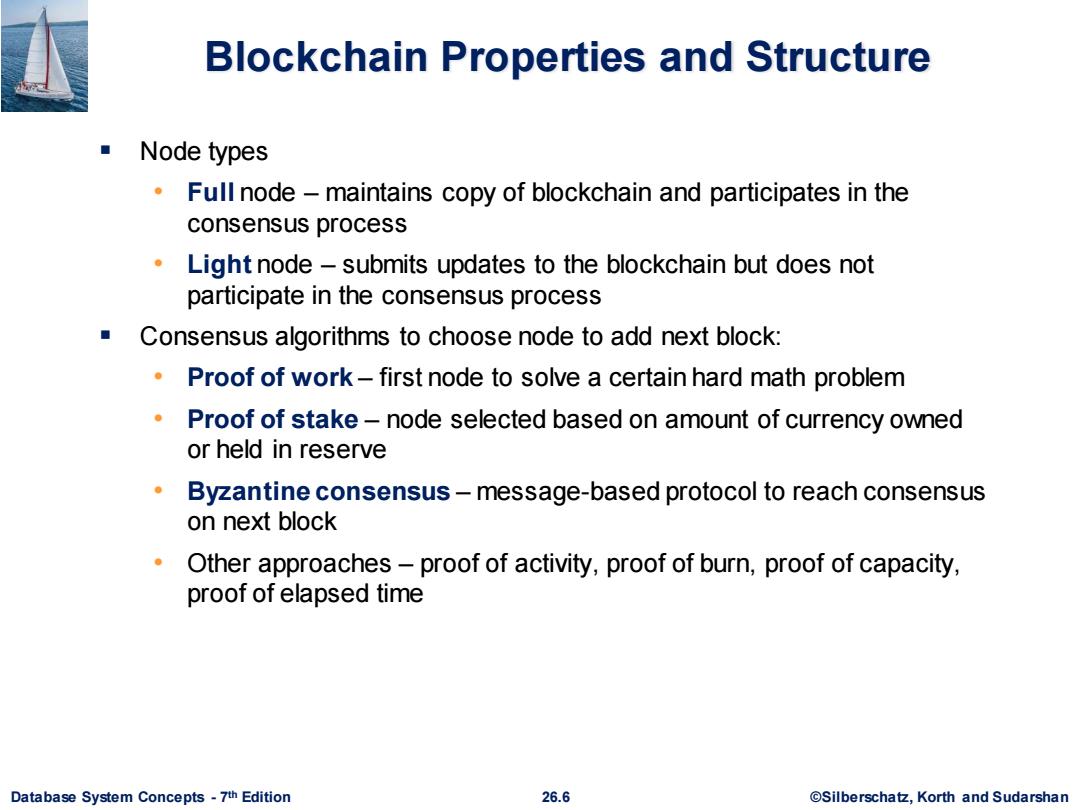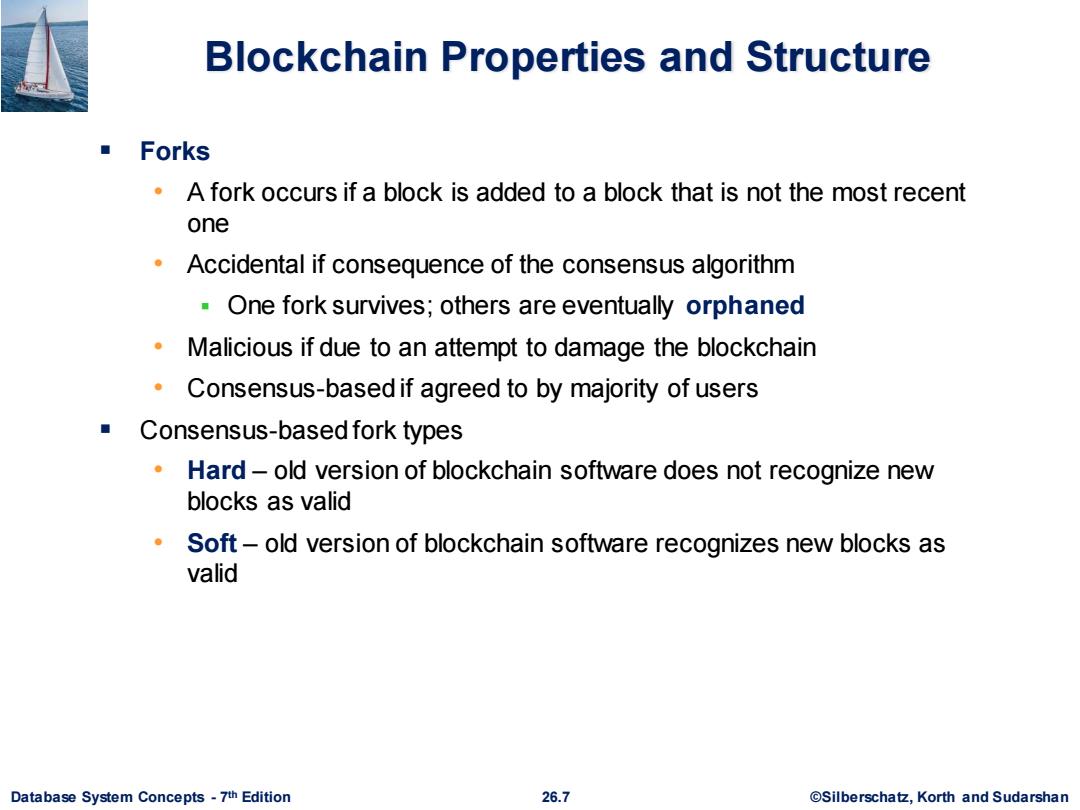
Blockchain Properties and Structure Node types Full node-maintains copy of blockchain and participates in the consensus process Light node -submits updates to the blockchain but does not participate in the consensus process Consensus algorithms to choose node to add next block: Proof of work-first node to solve a certain hard math problem Proof of stake-node selected based on amount of currency owned or held in reserve Byzantine consensus-message-based protocol to reach consensus on next block Other approaches-proof of activity,proof of burn,proof of capacity, proof of elapsed time Database System Concepts-7th Edition 26.6 ©Silberscha乜,Korth and Sudarshan
Database System Concepts - 7 26.6 ©Silberschatz, Korth and Sudarshan th Edition Blockchain Properties and Structure ▪ Node types • Full node – maintains copy of blockchain and participates in the consensus process • Light node – submits updates to the blockchain but does not participate in the consensus process ▪ Consensus algorithms to choose node to add next block: • Proof of work – first node to solve a certain hard math problem • Proof of stake – node selected based on amount of currency owned or held in reserve • Byzantine consensus – message-based protocol to reach consensus on next block • Other approaches – proof of activity, proof of burn, proof of capacity, proof of elapsed time

Blockchain Properties and Structure Forks A fork occurs if a block is added to a block that is not the most recent one Accidental if consequence of the consensus algorithm One fork survives;others are eventually orphaned Malicious if due to an attempt to damage the blockchain Consensus-based if agreed to by majority of users Consensus-based fork types Hard-old version of blockchain software does not recognize new blocks as valid Soft-old version of blockchain software recognizes new blocks as valid Database System Concepts-7th Edition 26.7 ©Silberscha乜,Korth and Sudarshan
Database System Concepts - 7 26.7 ©Silberschatz, Korth and Sudarshan th Edition Blockchain Properties and Structure ▪ Forks • A fork occurs if a block is added to a block that is not the most recent one • Accidental if consequence of the consensus algorithm ▪ One fork survives; others are eventually orphaned • Malicious if due to an attempt to damage the blockchain • Consensus-based if agreed to by majority of users ▪ Consensus-based fork types • Hard – old version of blockchain software does not recognize new blocks as valid • Soft – old version of blockchain software recognizes new blocks as valid